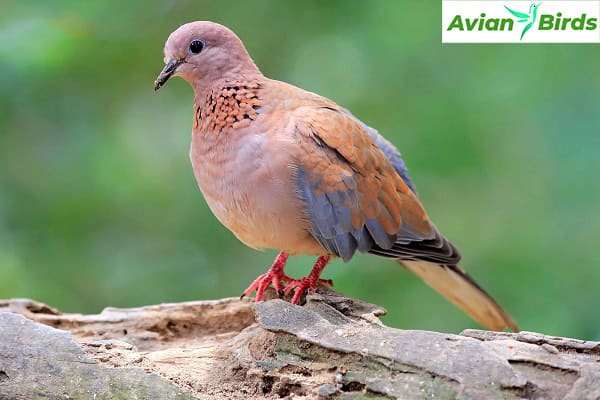Laughing Dove Identification (With Pictures)
The Laughing Dove is a small and charming bird known for its soft, cooing sounds that resemble laughter. These delightful birds can be found in various parts of the world, including Africa, the Middle East, and South Asia. With their gentle appearance and distinctive calls, Laughing Doves bring a touch of joy wherever they go.
~Here we’ll Discuss Laughing Dove In the World~
Interesting Facts About Laughing Dove
- The Laughing Dove is also known as the Palm Dove or the Senegal Dove in different regions.
- These doves can often be seen dust-bathing, which helps keep their feathers clean and free of parasites.
- In some cultures, the Laughing Dove is considered a symbol of love and peace.
1. Appearance and Behavior
Laughing Doves are easily recognizable by their pinkish-brown feathers and blue-gray wings. They have a slight iridescent sheen on their necks, adding a hint of sparkle when they move. Also, These doves are about 25 centimeters long, making them relatively small compared to other birds in the dove family.

One of the most endearing qualities of the Laughing Dove is its call. Unlike the harsh caw of a crow or the repetitive cooing of a pigeon, the Laughing Dove’s call is soft and melodic, often described as a series of gentle chuckles. More, This unique sound is why they are called “Laughing Doves.”
2. Habitat and Diet
Laughing Doves are very adaptable and can live in many places. Also, They like woodlands, savannas, cities, and gardens. You might see them on trees, power lines, or the ground looking for food.

The Laughing Dove mainly eats seeds, grains, and small insects. They love millet, which they pick up from the ground. Eating these foods helps keep gardens and fields pest-free, which is good for the environment.
3. Breeding and Nesting
Laughing Doves are monogamous, meaning they often pair for life. The Laughing Dove During the breeding season, which can occur multiple times a year depending on the region, the male dove performs a charming courtship display. He puffs up his chest, coos softly, and bows to the female to win her affection.
Once paired, the doves work together to build a simple nest, usually in trees or shrubs. The female lays two white eggs, which both parents take turns incubating. After about two weeks, the eggs hatch, and the parents continue to care for the chicks until they are ready to fledge and leave the nest.
4. Conservation Status
The Laughing Dove is not currently considered at risk. Moreover, Their ability to adapt to various environments has helped them maintain stable populations. However, like all wildlife, they benefit from conservation efforts that protect their habitats and ensure a steady food supply.
Wrapping Up…
In summary, the Laughing Dove is a delightful bird that brings joy with its soft, chuckling calls and gentle presence. Whether in the wild or a city garden, these doves remind us of nature’s simple and enduring beauty.






